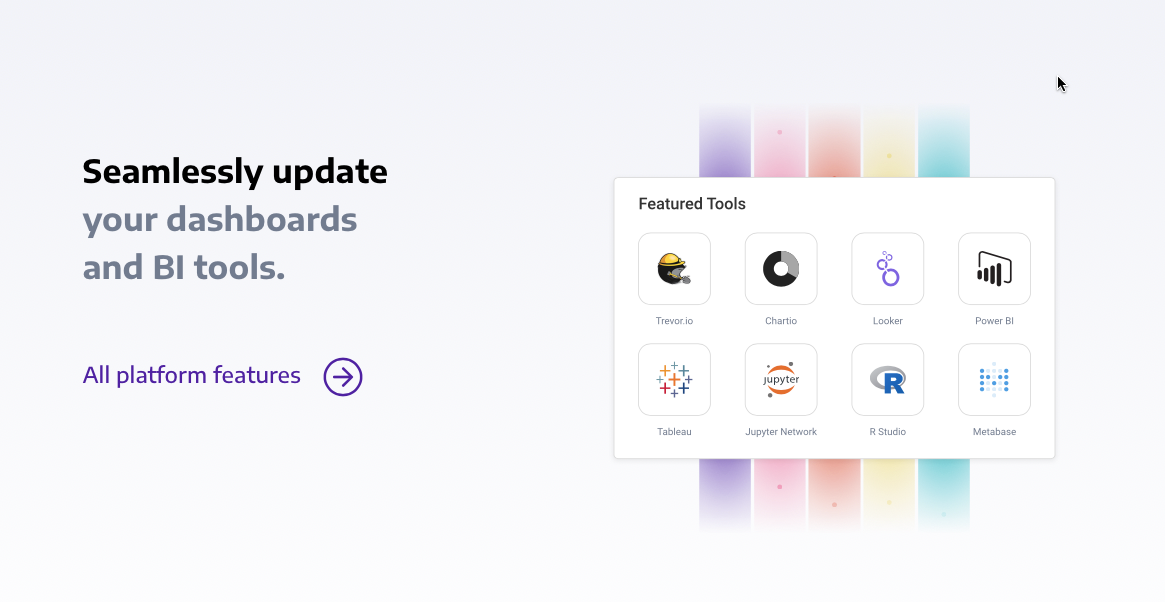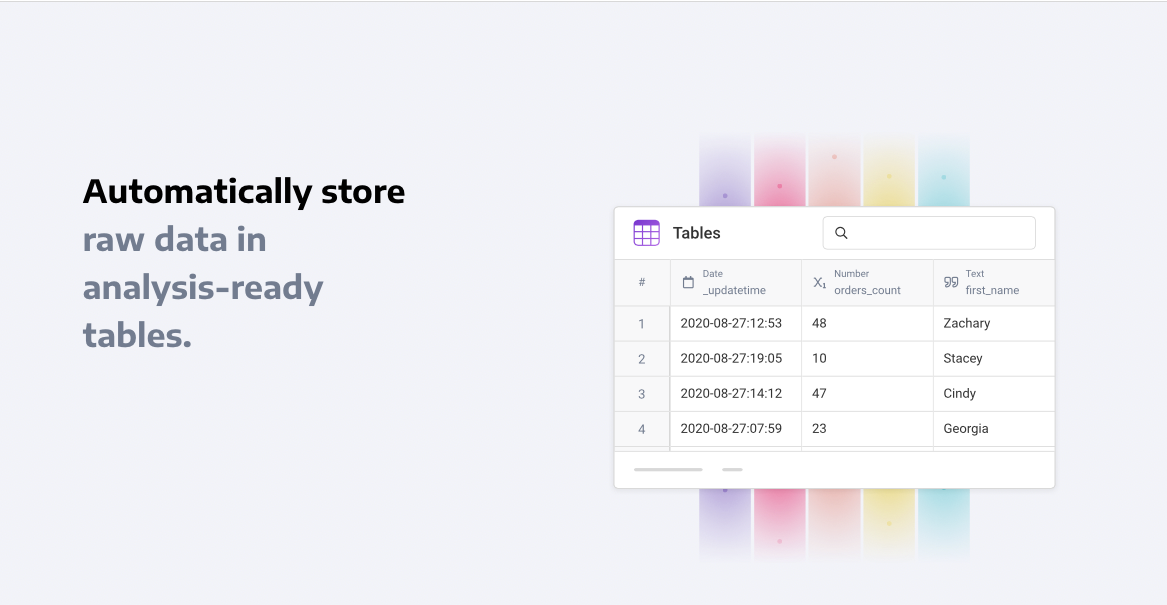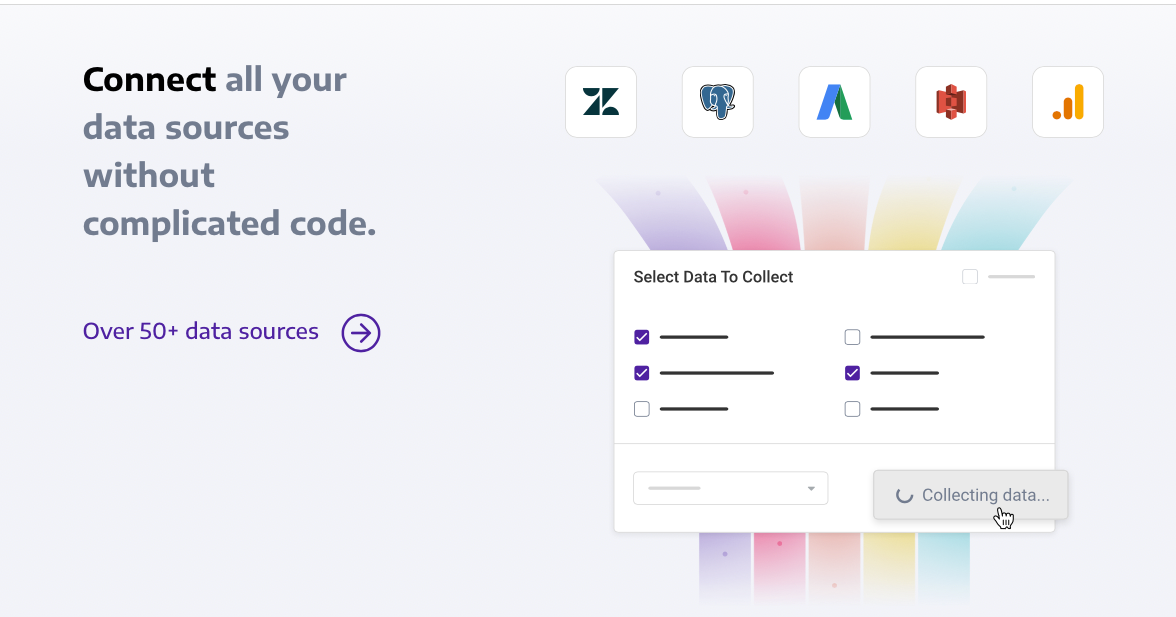A recent IDC DataSphere forecast report predicts that the compound annual growth rate of global data creation and replication will reach 23% between 2020 and 2025.
Another study suggests global data creation will grow to over 180 zettabytes during that same period.
Cheaper data storage and advanced analytics technologies are contributing to the current data explosion. But aggregating that data into a single place where you can easily analyze it remains a complex task.
With data trapped in isolated systems across an organization, teams struggle to access accurate, consistent data from the multiple analytics and ETL tools being used.
Fortunately, organizations can use a data warehouse to collect, organize, and analyze data on demand.
The role of data warehousing
Data warehousing consolidates large amounts of data from multiple sources and optimizes it to enable analysis for improving business efficiency, making better decisions, and discovering competitive advantages.
Note that a data warehouse is not the same as a database.
While both are relational data systems, a database uses online transaction processing (OLTP) to store current transactions and enables fast access to specific transactions for ongoing business processes.
On the other hand, data warehouses store large quantities of historical data and support fast, complex queries across all data using online analytical processing (OLAP).
This article will examine the benefits of a data warehouse and offer use cases where such a system could add value to your business.
Data warehouse benefits
A successfully implemented data warehouse can help your organization in several ways. Some of the benefits of a data warehouse include:
1. Consistency
Data warehousing typically involves converting data from multiple sources and formats into one standard format, making it easier for users to analyze and share insights on the entire collection of data.
More consistent data means that individual business departments such as marketing, sales, and finance can use the same data resource for queries and reports to produce results consistent with the other departments.
2. Centrality
Most organizations need to merge data from multiple subsystems built on different platforms to perform valuable business intelligence. Data warehousing solves this problem by consolidating data into a single repository, making all the organization’s data available from a centralized location.
3. Access
Data warehousing improves end-user access to a wide range of enterprise data.
In many cases, business users and decision-makers have to log into every individual department system and manually consolidate data or request reports through IT personnel to get the data they need. Using a data warehouse, business users can generate reports and queries on their own.
Users can access all the organization’s data from one interface instead of having to log into multiple systems. Easier access to data means less time spent on data retrieval and more time on data analysis.
4. Auditability
The goal of a data warehouse is to ensure that data is accurate, current, and accessible—which is also the goal of the auditing process.
The use of a data warehouse can ensure data integrity through implemented controls for roles and responsibilities related to extracting data from source systems and migrating to the data warehouse.
Security controls implemented within the data warehouse ensure that users only have read access to data.
5. Data sanitization
When data gets integrated from multiple systems, it can become inconsistent because of incomplete, duplicated, or redundant information. If the data is not cleansed or corrected, these errors could reflect in queries and reports, leading to inaccurate insights.
Data warehouses use a sanitization process to eliminate poor-quality information from the data repository. The method detects duplicate, corrupt, or inaccurate data sets, then replaces, modifies, or deletes records to ensure data integrity and consistency.
Use cases for a data warehouse
The following use cases demonstrate how you can use a data warehouse in your organization.
1. Marketing/sales campaign effectiveness
Marketing data can get scattered across multiple systems in an organization, including customer relationship management systems and sales systems. By the time teams pull together scattered data into spreadsheets to calculate important metrics, the data may have become outdated.
A marketing data warehouse creates a single source of data from which the marketing team can operate. In addition, you can merge data from systems within the organization and external systems such as web analytics platforms, advertising channels, and CRM platforms.
With a data warehouse, all marketers have access to the same standardized data, allowing them to execute faster, more efficient initiatives. Teams can generate more granular insights and better track performance metrics such as ROI, lead attribution, and customer acquisition costs.
Data warehouses can also process data in real-time, enabling marketers to build campaigns around the most recent data to generate more leads and business opportunities.

2. Team performance evaluations
Data warehouses can help evaluate team performance across the organization. Users can dig deeper into team data to create customized dashboards or reports, showing team performance based on specific metrics.
Metrics derived from the data warehouse, such as usage patterns, customer lifetime value, and acquisition sources, can be used to evaluate customer service, sales, and marketing teams, respectively.
In addition, combined data sets from other business areas can also highlight how teams have contributed to overall business performance and objectives.
3. IoT data integration
Internet of Things (IoT) devices, or network-connected devices like smartwatches, kitchen appliances, and security devices, generate vast amounts of data that you can analyze to improve systems and processes.
This data must be collected and stored in relational formats to support historical and real-time analysis. Then, instant queries are performed against millions of events or devices to discover real-time anomalies or predict events and trends from historical data.
IoT data analysis requires a high-performance, easy-to-access platform that’s flexible enough to respond immediately to changing conditions. This data can be summarized and filtered into fact tables with a data warehouse to create time-trended reports and other metrics.

4. Merging data from legacy systems
Legacy data is information stored in an old format or obsolete systems, making it difficult to access and process. Unfortunately, many businesses still rely on mainframe environments and other legacy application systems despite technological advancements in platforms, architectures, and tools.
One reason is that these systems have captured business knowledge and rules that are difficult to migrate to newer platforms and applications over the years. But the information within legacy systems can be a valuable data resource for analytical systems.
Legacy systems were built to perform specific functions and did not get constructed to analyze data. As a result, companies that run core functions on a mainframe or other legacy software don’t have timely access to core transactional data for real-time information.
Gaining access to data locked away within legacy systems can be pivotal to solving business problems and can help you discover trends you might not be able to see with newer data.
Data warehouses can automatically connect to legacy systems to collect and analyze data. Using ETL, data warehouses can transform data from legacy systems into a format that newer applications can use.
Merging legacy data with new applications can help provide greater insight into historical trends, leading to more accurate business decisions.

5. Analyzing large stream data
Large data streaming is a method that processes, you guessed it, large streams of real-time data to extract insights and useful trends. A continuous stream of unstructured data is analyzed before it gets stored to disk, and the value of the data can decrease if not processed immediately.
Processing occurs at high speeds across a cluster of servers in real-time; data cannot get reanalyzed once streamed.
Large stream data is continuously generated by multiple sources. The data can vary widely from a mobile device or web application log files to in-game player activity, social media information, and e-commerce purchases. Processed data gets used for several analytical purposes, such as aggregations, filtering, correlations, and sampling.
Data analysis performed on large stream data gives businesses insight into business and customer activities such as service usage, website clicks, device geolocation, and server activity.
A data warehouse can group large stream data to show its overall statistics. For example, a delivery company collects delivery event data that is sessionized to determine overall statistics for delivery times and the distance traveled.
The many benefits of using a data warehouse are evident in the above use cases, including:
- Streamlined information flow
- Enhanced data quality and consistency,
- Improved business intelligence
- Significant competitive advantage
- Improved decision making
Conclusion
Organizations that capture the full benefits of data are better equipped to handle changing market conditions and evolving customer requirements. As a result, data warehousing can offer great value to businesses to centralize and create more consistent data that’s easier for business users to access.
And as you’ve seen, data warehouses can be beneficial in several business scenarios, including marketing campaigns, IoT data integrations, and analyzing large stream data.
If you have complicated data requirements, a data warehouse can make things easier. With next-generation data warehousing tools like Panoply, you can connect all your data to a central data warehouse, reducing the time needed to get the most out of your data.
